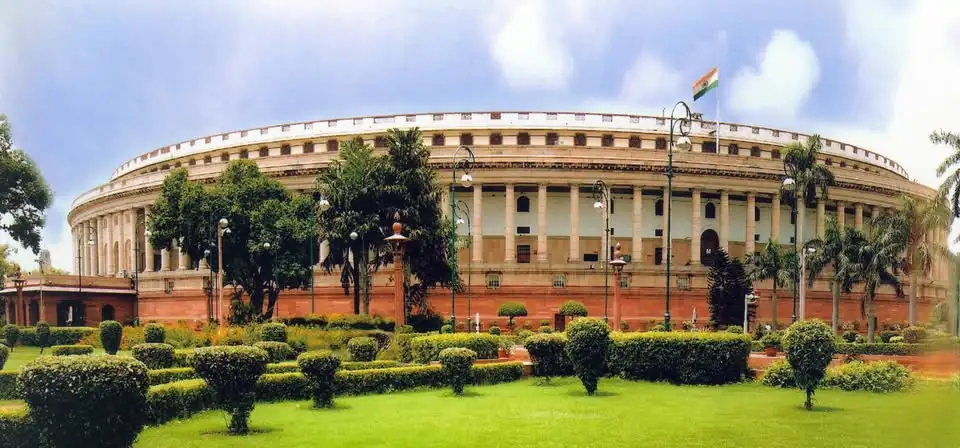The recent nomination of four distinguished individuals to the Rajya Sabha by the President of India has reignited discussions about the significance of India’s Upper House. These appointments, made under Article 80 of the Constitution, highlight how the Rajya Sabha safeguards federal balance while also drawing wisdom from experts in literature, science, art, and social service.
Rajya Sabha: The Council of States
India follows a bicameral parliamentary system with the Lok Sabha and the Rajya Sabha. While the Lok Sabha directly represents the people, the Rajya Sabha reflects the voice of states and some union territories. Hence , this arrangement ensures that national unity is balanced with regional diversity.The vision for the Rajya Sabha dates back to the Constituent Assembly. Leaders such as Dr. B.R. Ambedkar underlined the need for a chamber that would offer continuity, stability, and regional representation. In 1954, the names Lok Sabha and Rajya Sabha were formally adopted, giving shape to India’s two-tier legislature.
Unlike the Lok Sabha, the Rajya Sabha is permanent and it never dissolves. Therefore, this continuity ensures that governance remains steady even when the political tides in the Lok Sabha change.

Constitutional Foundation of the Rajya Sabha
The Constitution of India lays down the composition of the Rajya Sabha in Article 80. Its maximum strength is capped at 250 members, though the current strength is 245.
- Firstly, 238 members represent states and union territories of Delhi, Jammu & Kashmir, and Puducherry.
- Moreover , 12 members are nominated by the President of India from fields like art, literature, science, and social service.
The election process adds to the Rajya Sabha’s federal spirit. Members are elected indirectly by state legislatures through proportional representation and the single transferable vote system. This method ensures that even minority parties in states can find a voice at the national level.
Role and Functions of the Rajya Sabha
The Rajya Sabha is not just a second chamber. It performs several vital functions that preserve India’s democratic balance.
1. Federal Safeguard
The Rajya Sabha acts as a custodian of the states’ interests. Under Article 249, it can authorise Parliament to legislate on matters in the State List if two-thirds of its members agree it is in the national interest. Similarly, under Article 312, it holds the unique power to create All India Services.
2. Revising Chamber
The Rajya Sabha is a “revising chamber” that carefully examines bills passed by the Lok Sabha. This prevents hasty legislation and ensures policies are debated thoroughly before becoming law.
3. Legislative and Electoral Role
Both houses hold equal power in passing ordinary bills. Additionally, the Rajya Sabha shares responsibilities in electing the President and Vice President, removing judges, and holding the executive accountable. Importantly, only the Rajya Sabha can initiate the process to remove the Vice President.
Role of Nominated Members in the Rajya Sabha
One of the Rajya Sabha’s most unique features is the presence of nominated members. The President nominates 12 individuals who have excelled in literature, science, art, or social service. These members bring expertise and a fresh perspective to parliamentary debates. Unlike elected politicians, they also represent the intellectual and cultural capital of the nation. They have the power to introduce bills, participate in debates, and raise critical issues. However, they cannot vote in presidential elections, though they can in vice-presidential ones.
This system ensures that voices outside politics enrich India’s democratic decision-making.
Challenges Facing the Rajya Sabha
Despite its strong constitutional mandate, the Rajya Sabha faces several challenges today:
- Productivity is Declining due to frequent disruptions.
- Bypassing the Rajya Sabha by classifying bills as Money Bills, which only require Lok Sabha approval.
- Moreover , there is an issue of Unequal state representation, since seats are allotted based on population, reducing the voice of smaller states.
These issues raise questions about the Rajya Sabha’s effectiveness and its ability to fulfil its federal role.
Strengthening the Rajya Sabha
To keep the Rajya Sabha relevant and effective, certain reforms are necessary:
- First , it restores decorum in proceedings to ensure meaningful debates.
- Second , it cleared rules on classifying Money Bills, so that the Rajya Sabha is not sidelined.
- Third , it ensures to build stronger committees to carry out detailed legislative scrutiny.
- Moreover , it has transparent nomination process to uphold merit and credibility in presidential appointments.
By adopting these measures, the Rajya Sabha can continue to serve as a true “House of States” while enriching national governance.
Conclusion
The Rajya Sabha stands as a cornerstone of India’s parliamentary democracy. Its federal powers, revisory role, and the inclusion of nominated members make it indispensable for balanced governance. Recent presidential nominations reaffirm the importance of bringing diverse expertise into law-making. Although challenges like disruptions and bypassing procedures threaten its effectiveness, the Upper House still holds the constitutional tools to strengthen India’s democratic institutions. Understanding the Rajya Sabha is, therefore, essential for appreciating the balance between unity and diversity in India’s federal structure.
Frequently Asked Questions (FAQs) on Rajya Sabha
Rajya Sabha is the Council of States, representing the states and union territories of India. It is called the Upper House because it ensures federal balance, acts as a revising chamber, and provides continuity as it is a permanent body.
The Rajya Sabha has a maximum strength of 250 members, of which 238 are elected from states and union territories, while 12 are nominated by the President. Currently, the strength stands at 245 members.
Members of the Rajya Sabha are elected by the elected members of State Legislative Assemblies and the members of the Electoral College of Union Territories through proportional representation by means of single transferable vote.
Each Rajya Sabha member serves for a six-year term, with one-third of members retiring every two years. Unlike the Lok Sabha, the Rajya Sabha is a permanent body and is never dissolved.
The Vice-President of India is the ex officio Chairman of the Rajya Sabha. In his absence, the Deputy Chairman or a panel member presides.
Prelims Practice Question (MCQ)
Q. Consider the following statements about Rajya Sabha:
- Rajya Sabha is a permanent house and cannot be dissolved.
- The Vice-President of India is the ex officio Chairman of the Rajya Sabha.
- Money Bills can be introduced in the Rajya Sabha with the prior recommendation of the President.
- The maximum strength of the Rajya Sabha is 250 members.
Which of the statements given above is/are correct?
a) 1, 2, and 4 only
b) 1 and 3 only
c) 2 and 4 only
d) 1, 2, 3, and 4
Answer: a) 1, 2, and 4 only
Mains Question
Q. Critically analyze the role of the Rajya Sabha in ensuring federal balance and legislative scrutiny in India. Do you think its role has been weakened in recent decades? Suggest reforms to make the Rajya Sabha more effective.
CITATIONS









